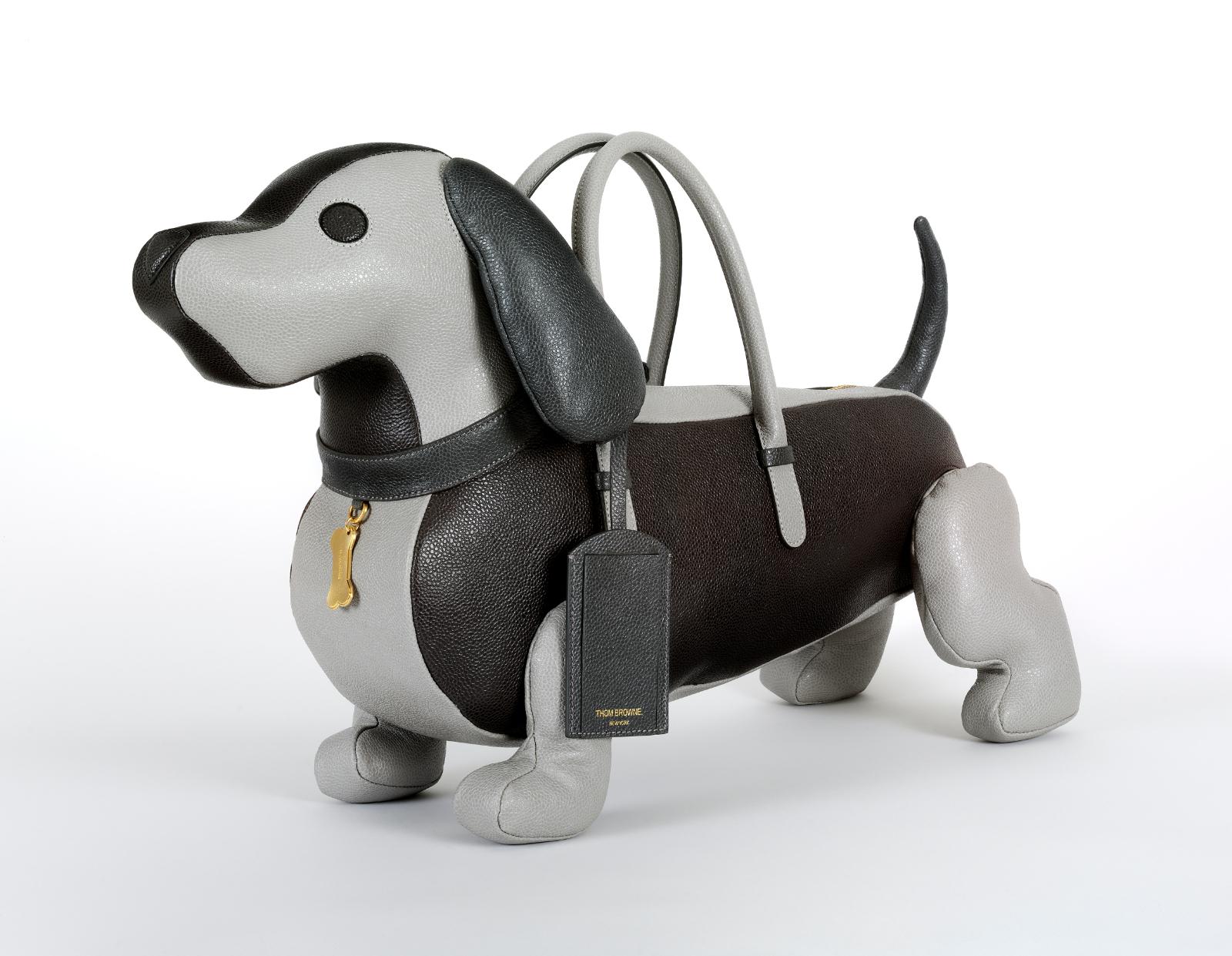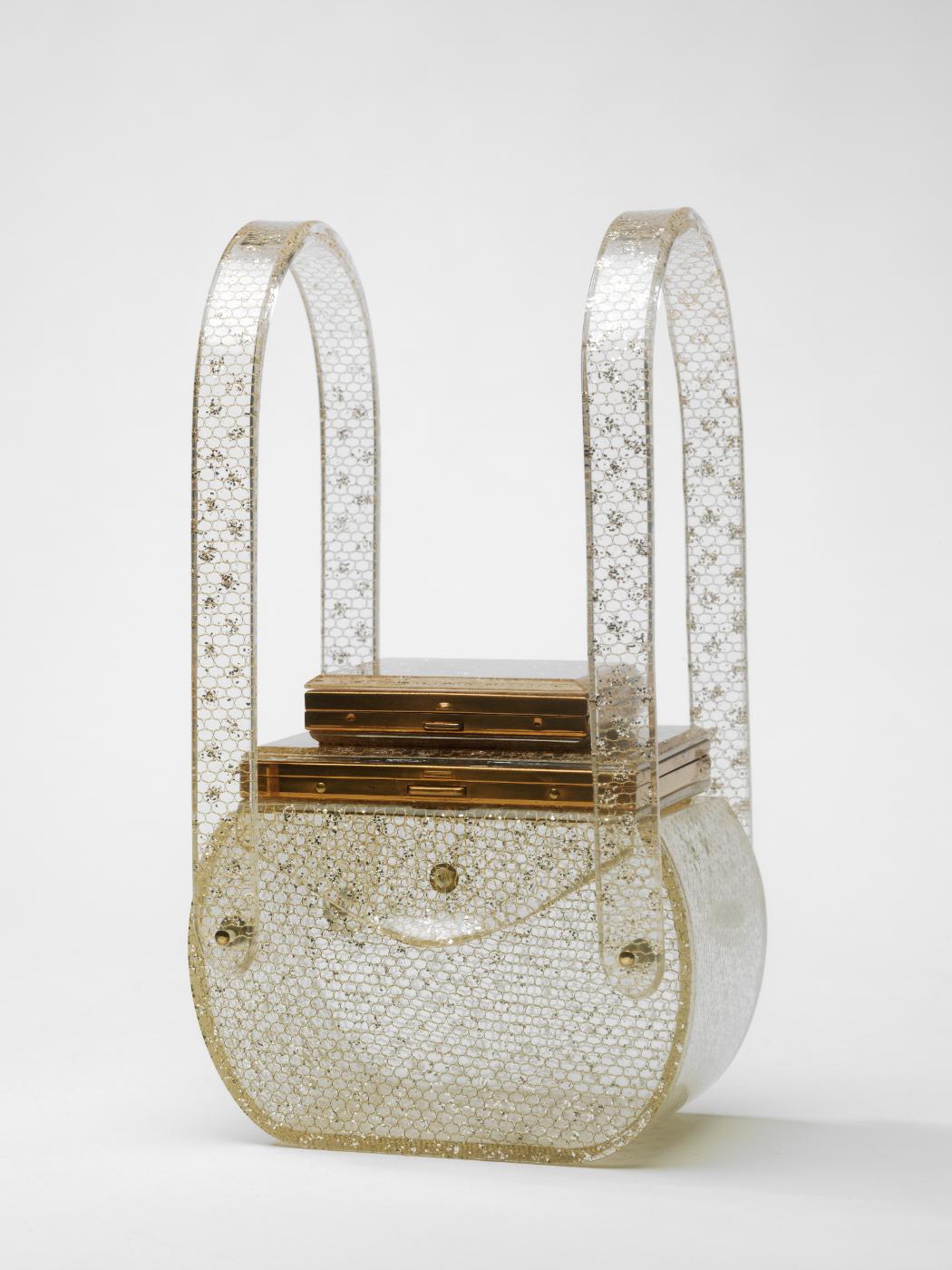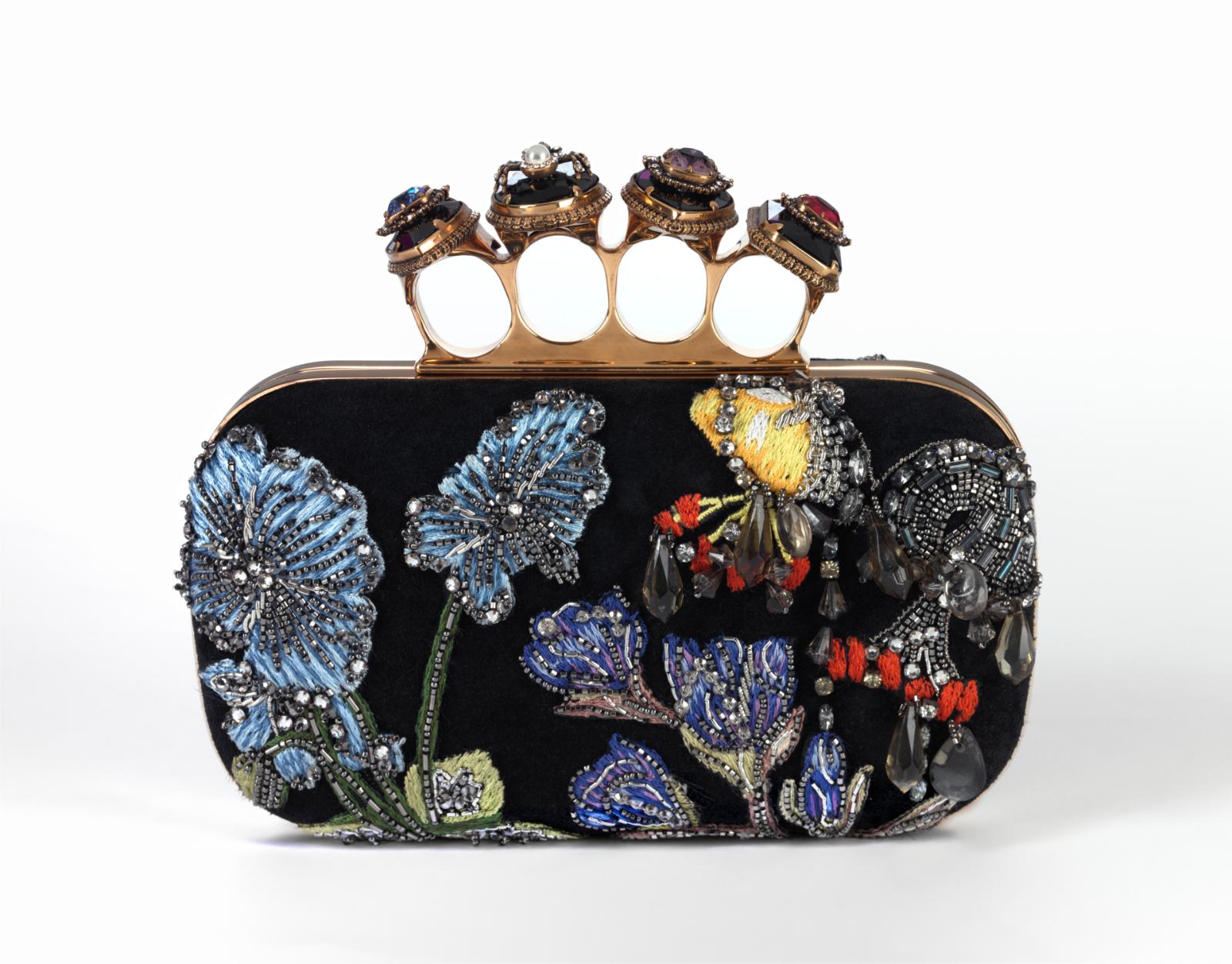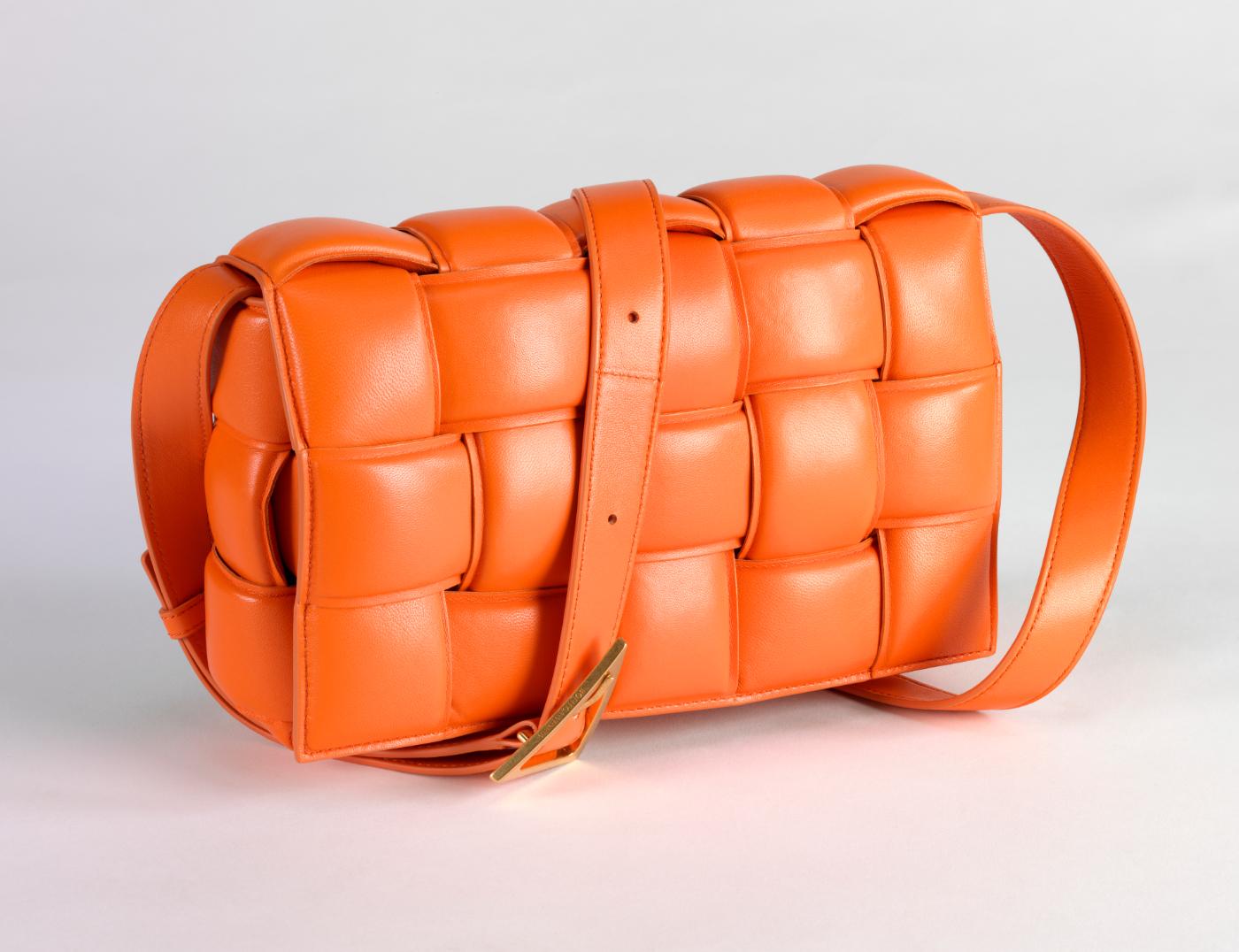The first section of the exhibition on Function and Utility examines bags as practical objects designed to hold our belongings. From holiday outfits to confidential documents, make-up to money and even gas masks, the design and materials of our bags often reflect their intended purpose as functional objects. Rare exhibits on show include a large embroidered burse used to protect the silver matrix of Elizabeth I’s Great Seal of England, a gas mask bag owned by HRH Queen Mary during the Second World War, Winston Churchill’s red despatch box and Vivien Leigh’s attaché case. A striking Louis Vuitton trunk from the early 1900s embodies how modes of transport throughout history have influenced the changing shape of luggage. Once belonging to the American socialite Emilie Grigsby, an extensive conservation and research project helped to bring the trunk back to life with its labels and markings revealing a hidden history of its travels on the world’s great ocean liners.
Entitled Status and Identity, the second of the three exhibition sections, looks at the central role of the bag in celebrity culture as well as its notoriety amongst the political and societal elite. Featuring a Hermès ‘Kelly’ named in honor of Grace Kelly and a ‘Lady Dior’ handbag named after Princess Diana, the exhibition explores the powerful and influential world of celebrity endorsement. The first-ever made Hermes Birkin bag owned by actress and singer Jane Birkin takes center stage–a bag that became one of the most sought-after and celebrated handbags of the 20th and 21st century. Bearing her initials, the namesake bag was heavily used by the star and shows residue of adhesive from the stickers she liked to apply to it.
































